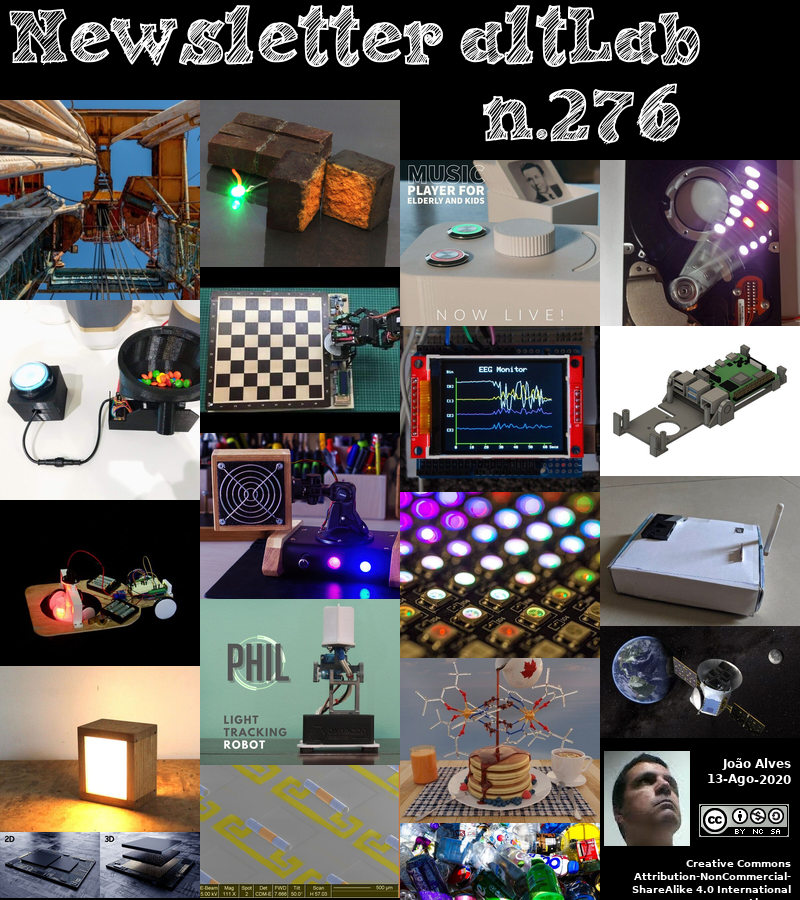2020-08-13 - Nº 276
Editorial
Esta é a Newsletter Nº 276 que se apresenta com o mesmo formato que as anteriores. Se gostar da Newsletter partilhe-a!
Todas as Newsletters encontram-se indexadas no link.
Esta Newsletter tem os seguintes tópicos:
Faz hoje anos que nascia, em 1625, o matemático e físico dinamarquês Rasmus Bartholin. Ele descobriu o fenómeno óptico da refracção dupla. Em 1669, Bartholin observou que as imagens vistas através do feldspato islandês (calcita) eram duplicadas e que, quando o cristal era girado, uma imagem permanecia estacionária enquanto a outra girava com o cristal. Tal comportamento da luz não poderia ser explicado usando as teorias ópticas de Isaac Newton da época. Posteriormente, isto foi explicado como o efeito da polarização da luz. Bartholin escreveu um grande número de trabalhos matemáticos e fez observações astronómicas, incluindo os cometas de 1665. Ele também é famoso pelo seu trabalho médico, em particular a introdução do quinino na luta contra a malária.
Faz também hoje anos que nascia, em 1814, o físico sueco Anders Ångström. Ele foi pioneiro no uso da espectroscopia e é reconhecido no nome do angstrom, uma unidade de comprimento igual a 10^-10 metros. Em 1853, ele estudou o espectro de hidrogénio para o qual Balmer derivou uma fórmula. Ele anunciou em 1862 que a análise do espectro solar mostrava que o hidrogénio está presente na atmosfera solar. Em 1867 ele foi o primeiro a examinar o espectro da aurora boreal. Ele publicou a sua extensa pesquisa sobre o espectro solar em Recherches sur le specter solaire (1868), com medições detalhadas de mais de 1000 linhas espectrais. Ele também publicou trabalhos sobre teoria térmica e realizou medições geo-magnéticas em diferentes lugares da Suécia.
Faz igualmente anos hoje que nascia, em 1819, o físico teórico britânico George Stokes. Ele estudou fluidos viscosos e formulou a sua lei da viscosidade para a velocidade de uma esfera sólida a cair num fluido. Outras leis e trabalhos matemáticos pelos quais é conhecido incluem o teorema de Stokes, no campo da análise vectorial. Stokes também trabalhou em óptica, a teoria das ondas da luz, difracção (1849), o espectro ultravioleta e outras análises de espectro. Ele cunhou a palavra fluorescência (1852) enquanto estudava esse fenómeno e foi um dos fundadores do campo da geodésia com seu estudo das variações da gravidade (1849).
Faz também hoje anos que nascia, em 1875, o astrónomo alemão Heinrich Louis d'Arrest. Ele foi responsável por acelerar a descoberto do planeta Neptuno ao sugerir a comparação do céu, na região indicada pelos cálculos de Urbain Le Verrier, com um mapa estelar preparado recentemente. O planeta foi encontrado na mesma noite. O seu sogro foi A. F. Moebius (1790 - 1868). d'Arrest encontrou vários cometas, o de 1851 com um período de 6,6 anos tem o seu nome. Um trabalho que ele publicou foi sobre os asteróides entre Marte e Júpiter, outro trabalho intitulado Siderum nebulosorum Noticees Hafniensis continha 1942 nebulosas, das quais 340 descritas pela primeira vez.
Faz igualmente hoje anos que nascia, em 1888, o engenheiro escocês John Logie Baird. Ele foi o primeiro homem a televisionar imagens de contorno de objectos (1924), seguido no ano seguinte por rostos humanos reconhecíveis. Em 1926, ele foi capaz de demonstrar a TV para objectos em movimento no Royal Institution de Londres, e a TV em cores em 1928. Em 1936, a BBC iniciou o primeiro serviço regular de alta definição do Alexandra Palace usando o sistema Baird, embora fosse abandonado um ano depois em favor de um sistema desenvolvido pela Marconi-EMI. Em 1939, 20.000 aparelhos de televisão estavam a ser usados na Grã-Bretanha. Em 1940, Baird fez uma demonstração de uma televisão estéreo colorida de alta definição. Baird continuou experimentando e foi relatado que completou as suas pesquisas na televisão estereoscópica em 1946.
Por fim, faz anos hoje que nascia, em 1902, o engenheiro alemão Felix Wankel. Ele inventou o primeiro motor rotativo de combustão interna. Em 1924, ele abriu a sua própria oficina e teve a ideia de um motor rotativo. Em 1927, ele tinha desenhado a forma do seu motor de pistão rotativo. Embora ele tenha recebido sua primeira patente em 1929 (DRP 507.584), foi em Fevereiro de 1957 que o primeiro motor rotativo Wankel verdadeiramente funcional estava pronto. Em vez de pistões em movimento, o motor Wankel usa um rotor orbital em forma de triângulo equilátero curvo. Assim, necessita de poucas peças móveis, é leve e compacto.
E nesta semana que passou ficámos a saber que em 4 de Julho, o Transiting Exoplanet Survey Satellite (TESS) da NASA concluiu sua missão principal, visualizando cerca de 75% do céu estrelado como parte de uma pesquisa de dois anos. Ao capturar este mosaico gigante, o TESS encontrou 66 novos exo-planetas, ou mundos além do nosso sistema solar, bem como cerca de 2.100 candidatos que os astrónomos estão a trabalhar para confirmar. “A TESS está a produzir uma torrente de observações de alta qualidade, fornecendo dados valiosos numa ampla gama de tópicos científicos”, disse Patricia Boyd, cientista do projecto da TESS no Goddard Space Flight Center da NASA em Greenbelt, Maryland. “Ao entrar em sua missão estendida, TESS já é um sucesso estrondoso.”
Também nesta semana que passou, um dos maiores radio telescópios do mundo, localizado em Arecibo em Porto Rico sofreu danos que o deixaram inoperacional. Um dos cabos auxiliares que ajuda a sustentar uma plataforma de metal colocada acima do Observatório, partiu-se na segunda-feira (10 de Agosto), causando um corte de 30 metros de comprimento no prato reflector do telescópio. As instalações da National Science Foundation estão fechadas enquanto os engenheiros avaliam os danos e estimam a extensão das reparações que serão necessárias para colocar o telescópio novamente em operação.
Na Newsletter desta semana apresentamos diversas noticias, artigos científicos assim como projetos de maker. É apresentado um modelo 3D para imprimir assim como a revista newelectronics de 11 de Agosto.
 João Alves ([email protected])
João Alves ([email protected])
O conteúdo da Newsletter encontra-se sob a licença  Creative Commons Attribution-NonCommercial-ShareAlike 4.0 International License.
Creative Commons Attribution-NonCommercial-ShareAlike 4.0 International License.
Novidades da Semana

NASA’s Planet Hunter Completes Its Primary Mission
"On July 4, NASA’s Transiting Exoplanet Survey Satellite (TESS) finished its primary mission, imaging about 75% of the starry sky as part of a two-year-long survey. In capturing this giant mosaic, TESS has found 66 new exoplanets, or worlds beyond our solar system, as well as nearly 2,100 candidates astronomers are working to confirm. “TESS is producing a torrent of high-quality observations providing valuable data across a wide range of science topics,” said Patricia Boyd, the project scientist for TESS at NASA's Goddard Space Flight Center in Greenbelt, Maryland. “As it enters its extended mission, TESS is already a roaring success.” TESS monitors 24-by-96-degree strips of the sky called sectors for about a month using its four cameras. The mission spent its first year observing 13 sectors comprising the southern sky and then spent another year imaging the northern sky. Now in its extended mission, TESS has turned around to resume surveying the south." [...]

Broken Cable Damages Arecibo Observatory
"The National Science Foundation facility is closed while engineers review the damage and assess the extent of repairs that will be needed to bring the telescope back online. One of the auxiliary cables that helps support a metal platform in place above the Arecibo Observatory in Puerto Rico, broke on Monday (Aug. 10) causing a 100-foot-long gash on the telescope’s reflector dish. Operations at the UCF-managed observatory are stopped until repairs can be made. The break occurred about 2:45 a.m. When the three-inch cable fell it also damaged about 6-8 panels in the Gregorian Dome and twisted the platform used to access the dome. It is not yet clear what caused the cable to break." [...]
Outras Notícias
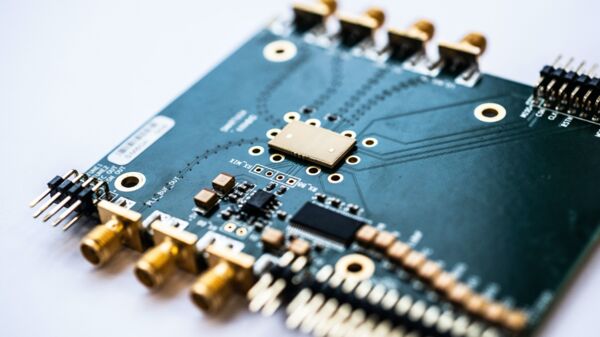
Imec presents low-power 60 GHz radar chip for contactless health tracking in battery-powered devices
"This week at the virtual conference IEEE RFIC, leading research and innovation hub imec presents a millimeter-wave motion detection radar at 60GHz, integrated in standard 28nm CMOS. Achieving 2-cm range resolution, the ultra-sensitive radar is optimized for vital sign monitoring and gesture recognition. The compact radar chip only consumes 62 mW, making the sensor integrable into small, battery-powered devices. Experiments have demonstrated the sensor’s ability for multi-target detection, heartbeat detection at 5 meter and accurate tracking of a pedestrian’s position and velocity. Imec’s new radar design generates fast modulated waves, with a frequency increase of 12 percent in just 51.2 microseconds. A high modulation bandwidth (7.2 GHz) determines the sensor’s ultra-fine resolution, which makes it suitable for 3D sensing of finger motions, hand swiping and gestures." [...]
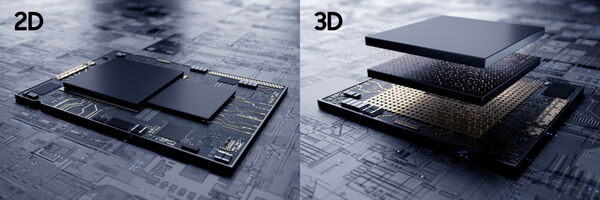
Samsung Announces Availability of its Silicon-Proven 3D IC Technology for High-Performance Applications
"Samsung Electronics, a world leader in advanced semiconductor technology, today announced the immediate availability of its silicon-proven 3D IC packaging technology, eXtended-Cube (X-Cube), for today’s most advanced process nodes. Leveraging Samsung’s through-silicon via (TSV) technology, X-Cube enables significant leaps in speed and power efficiency to help address the rigorous performance demands of next-generation applications including 5G, artificial intelligence, high-performance computing, as well as mobile and wearable. “Samsung’s new 3D integration technology ensures reliable TSV interconnections even at the cutting-edge EUV process nodes,” said Moonsoo Kang, senior vice president of Foundry Market Strategy at Samsung Electronics. “We are committed to bringing more 3D IC innovation that can push the boundaries of semiconductors.” With Samsung’s X-Cube, chip designers can enjoy greater flexibility to build custom solutions that best suit their unique requirements. The X-Cube test chip built on 7nm uses TSV technology to stack SRAM on top of a logic die, freeing up space to pack more memory into a smaller footprint. Enabled by 3D integration, the ultra-thin package design features significantly shorter signal paths between the dies for maximized data transfer speed and energy efficiency." [...]

Maxim Integrated’s USB-C Power Delivery Solutions Accelerate Industry Adoption by Cutting Development Time by Three Months and Reducing Solution Size in Half
"Out-of-the-box compliance, elimination of firmware development and 50 percent smaller solution size allow system designers to overcome challenges of implementing USB-C Power Delivery Overcome the challenges of implementing USB-C Power Delivery (PD) with the MAX77958 USB-C PD controller and the MAX77962 28W buck-boost charger from Maxim Integrated Products, Inc. (NASDAQ: MXIM). As portable devices add new technologies such as 5G connectivity and 4K video, many are changing from single-cell to two-series (2S) cell architectures. With this change comes the need for higher power delivery via USB-C PD and higher-power charging (25W or higher). With the MAX77958 USB-C PD controller, designers can now cut development time by three months with an out-of-the-box USB-C PD compliant solution, while also reducing the solution size in half with the MAX77962 buck-boost charger. " [...]

Intel says new transistor technology could boost chip performance 20%
"Intel Corp (INTC.O) on Thursday disclosed a new method for making transistors on semiconductors that its chief architect said could boost the performance Intel’s next round of processors by as much as 20%. The Santa Clara, California-based company is one of the few remaining in the world that both designs and manufactures its own chips. But its manufacturing operations have become a concern among investors after Intel last month said that its next-generation chip-making process, called its 7-nanonmeter process node, would be delayed. Analysts believe the delays could cement the lead that rivals such as Taiwan Semiconductor Manufacturing Co (2330.TW) have gained in making smaller, more power efficient chips. Intel’s shares have fallen nearly 20% since the delays were disclosed. On Thursday, Intel sought to buck the notion that the single-number names given to each generation of chip process node tell the entire story by disclosing improvements on its existing 10-nanonmeter process node." [...]
Ciência e Tecnologia
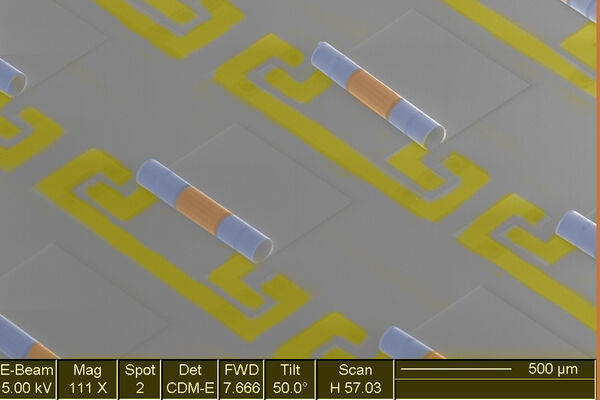
Electronic components join forces to take up 10 times less space on computer chips
"Electronic filters are part of the inner workings of our phones and other wireless devices. They eliminate or enhance specific input signals to achieve the desired output signals. They are essential, but take up space on the chips that researchers are on a constant quest to make smaller. A new study demonstrates the successful integration of the individual elements that make up electronic filters onto a single component, significantly reducing the amount of space taken up by the device. Researchers at the University of Illinois, Urbana-Champaign have ditched the conventional 2D on-chip lumped or distributed filter network design – composed of separate inductors and capacitors – for a single, space-saving 3D rolled membrane that contains both independently designed elements. The results of the study, led by electrical and computer engineering professor Xiuling Li, are published in the journal Advanced Functional Materials." [...]

Break it down: A new way to address common computing problem
"A computational framework for solving linear inverse problems takes a parallel computing approach In this era of big data, there are some problems in scientific computing that are so large, so complex and contain so much information that attempting to solve them would be too big of a task for most computers. Now, researchers at the McKelvey School of Engineering at Washington University in St. Louis have developed a new algorithm for solving a common class of problem — known as linear inverse problems — by breaking them down into smaller tasks, each of which can be solved in parallel on standard computers. The research, from the lab of Jr-Shin Li, professor in the Preston M. Green Department of Electrical & Systems Engineering, was published July 30 in the journal Scientific Reports. In addition to providing a framework for solving this class of problems, the approach, called Parallel Residual Projection (PRP), also delivers enhanced security and mitigates privacy concerns. Linear inverse problems are those that attempt to take observational data and try to find a model that describes it. In their simplest form, they may look familiar: 2x+y = 1, x-y = 3." [...]
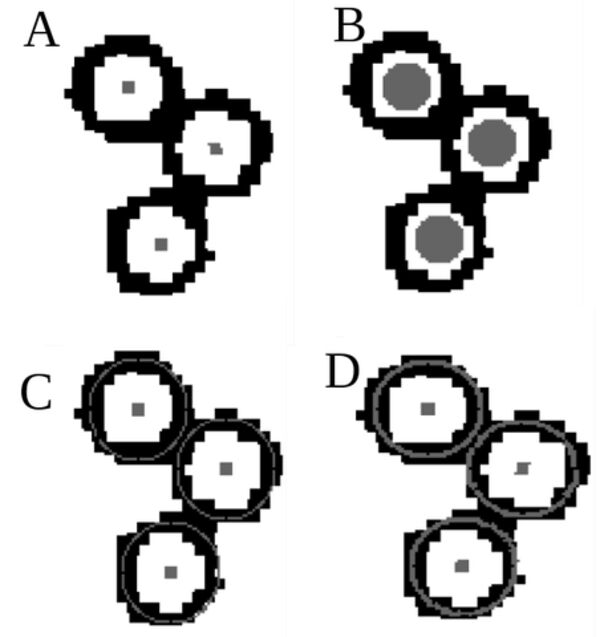
Recovering Data: NIST’s Neural Network Model Finds Small Objects in Dense Images
"In efforts to automatically capture important data from scientific papers, computer scientists at the National Institute of Standards and Technology (NIST) have developed a method to accurately detect small, geometric objects such as triangles within dense, low-quality plots contained in image data. Employing a neural network approach designed to detect patterns, the NIST model has many possible applications in modern life. NIST’s neural network model captured 97% of objects in a defined set of test images, locating the objects’ centers to within a few pixels of manually selected locations. “The purpose of the project was to recover the lost data in journal articles,” NIST computer scientist Adele Peskin explained. “But the study of small, dense object detection has a lot of other applications. Object detection is used in a wide range of image analyses, self-driving cars, machine inspections, and so on, for which small, dense objects are particularly hard to locate and separate.” The researchers took the data from journal articles dating as far back as the early 1900s in a database of metallic properties at NIST’s Thermodynamics Research Center (TRC)." [...]
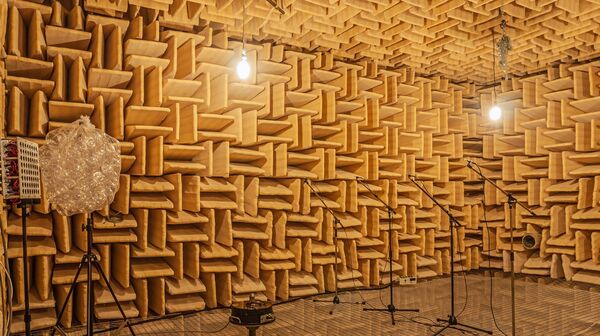
Deep learning and metamaterials make the invisible visible
"By combining purpose-built materials and neural networks, researchers at EPFL have shown that sound can be used in high-resolution imagery. Imaging allows us to depict an object through far-field analysis of the light- and sound-waves that it transmits or radiates. The shorter the wave, the higher the image’s resolution. However, the level of detail is limited by the size of the wavelength in question – until now. Researchers at EPFL’s Laboratory of Wave Engineering have successfully proven that a long, and therefore imprecise, wave (in this case a sound wave) can elicit details that are 30 times smaller than its length. To achieve this, the research team used a combination of metamaterials – specifically-engineered elements – and artificial intelligence." [...]
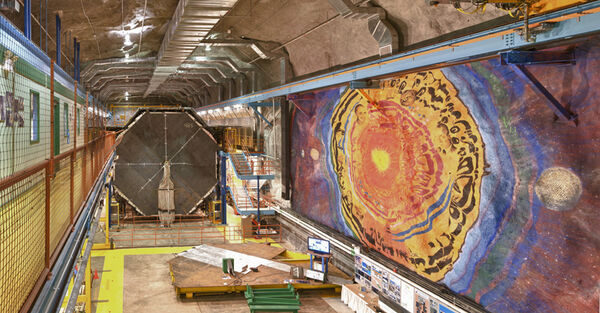
A team of international physicists join forces in hunt for sterile neutrinos
"An international group of more than 260 scientists have produced one of the most stringent tests for the existence of sterile neutrinos to date. The scientists from two major international experimental groups, MINOS+ at the Department of Energy’s Fermilab and Daya Bay in China, are reporting results in Physical Review Letters ruling out oscillations into one sterile neutrino as the primary explanation for unexpected observations from recent experiments. MINOS+ studies the disappearance of muon neutrinos produced by a Fermilab accelerator and propagating to an underground detector in northern Minnesota 735 kilometers away. Daya Bay uses eight identically designed detectors to precisely measure how electron neutrinos emitted by six nuclear reactors in China “disappear” as they morph into other types. Neutrinos are elementary particles that, like electrons, cannot be broken down into smaller components. They are unlike any other particle known to exist in that they are able to penetrate extremely large amounts of matter without stopping." [...]
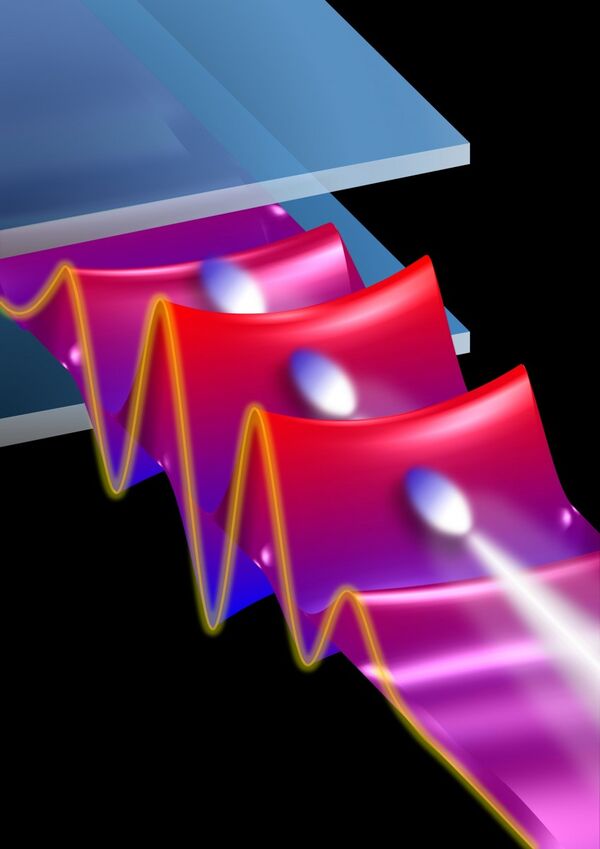
Scientists create compact particle accelerators which drive 1000 times more charge to near the speed of light
"Scientists have successfully developed a pocket-sized particle accelerator capable of projecting ultra-short electron beams with laser light at more than 99.99% of the speed of light. To achieve this result, the researchers have had to slow down light to match the speed of the electrons using a specially designed metallic structure lined with quartz layers thinner than a human hair. This huge leap forward simultaneously offers the ability to both measure and manipulate particle bunches on time scales of less than 10 femtoseconds (0.000 000 000 000 01 seconds, or the time is takes light to travel 1/100th of a millimetre). This will enable them to create strobe photographs of atomic motion. This successful demonstration paves the way to the development of high-energy, high-charge, high-quality Terahertz (THz) driven accelerators, which promise to be cheaper and more compact. Reducing the size and cost of accelerator technology, will open up these incredible machines to a much wider range of applications." [...]

Quantum Materials Quest Could Benefit From Graphene That Buckles
"Cooled graphene mimics effect of enormous magnetic fields that would benefit electronics Graphene, an extremely thin two-dimensional layer of the graphite used in pencils, buckles when cooled while attached to a flat surface, resulting in beautiful pucker patterns that could benefit the search for novel quantum materials and superconductors, according to Rutgers-led research in the journal Nature. Quantum materials host strongly interacting electrons with special properties, such as entangled trajectories, that could provide building blocks for super-fast quantum computers. They also can become superconductors that could slash energy consumption by making power transmission and electronic devices more efficient. “The buckling we discovered in graphene mimics the effect of colossally large magnetic fields that are unattainable with today’s magnet technologies, leading to dramatic changes in the material’s electronic properties,” said lead author Eva Y. Andrei, Board of Governors professor in the Department of Physics and Astronomy in the School of Arts and Sciences at Rutgers University–New Brunswick. “Buckling of stiff thin films like graphene laminated on flexible materials is gaining ground as a platform for stretchable electronics with many important applications, including eye-like digital cameras, energy harvesting, skin sensors, health monitoring devices like tiny robots and intelligent surgical gloves. Our discovery opens the way to the development of devices for controlling nano-robots that may one day play a role in biological diagnostics and tissue repair.” The scientists studied buckled graphene crystals whose properties change radically when they’re cooled, creating essentially new materials with electrons that slow down, become aware of each other and interact strongly, enabling the emergence of fascinating phenomena such as superconductivity and magnetism, according to Andrei." [...]

Upcycling plastic waste toward sustainable energy storage
"What if you could solve two of Earth’s biggest problems in one stroke? UC Riverside engineers have developed a way to recycle plastic waste, such as soda or water bottles, into a nanomaterial useful for energy storage. Mihri and Cengiz Ozkan and their students have been working for years on creating improved energy storage materials from sustainable sources, such as glass bottles, beach sand, Silly Putty, and portabella mushrooms. Their latest success could reduce plastic pollution and hasten the transition to 100% clean energy. “Thirty percent of the global car fleet is expected to be electric by 2040, and high cost of raw battery materials is a challenge,” said Mihri Ozkan, a professor of electrical engineering in UCR’s Marlan and Rosemary Bourns College of Engineering. “Using waste from landfill and upcycling plastic bottles could lower the total cost of batteries while making the battery production sustainable on top of eliminating plastic pollution worldwide.” In an open-access article published in Energy Storage, the researchers describe a sustainable, straightforward process for upcycling polyethylene terephthalate plastic waste, or PET, found in soda bottles and many other consumer products, into a porous carbon nanostructure." [...]

Researchers unlock secrets of the past with new international carbon dating standard
"The team of researchers at the Universities of Sheffield, Belfast, Bristol, Glasgow, Oxford, St Andrews and Historic England, plus international colleagues, used measurements from almost 15,000 samples from objects dating back as far as 60,000 years ago, as part of a seven-year project. They used the measurements to create new international radiocarbon calibration (IntCal) curves, which are fundamental across the scientific spectrum for accurately dating artefacts and making predictions about the future. Radiocarbon dating is vital to fields such as archaeology and geoscience to date everything from the oldest modern human bones to historic climate patterns. Archaeologists can use that knowledge to restore historic monuments or study the demise of the Neanderthals, while geoscientists on the Intergovernmental Panel on Climate Change (IPCC), rely upon the curves to find out about what the climate was like in the past to better understand and prepare for future changes. Professor Paula Reimer, from Queen’s University Belfast and head of the IntCal project, said: “Radiocarbon dating has revolutionised the field of archaeology and environmental science. As we improve the calibration curve, we learn more about our history." [...]

‘Black dwarf supernova’: ISU physicist calculates when the last supernova ever will happen
"The end of the universe as we know it will not come with a bang. Most stars will very, very slowly fizzle as their temperatures fade to zero. “It will be a bit of a sad, lonely, cold place,” said theoretical physicist Matt Caplan, who added no one will be around to witness this long farewell happening in the far far future. Most believe all will be dark as the universe comes to an end. “It’s known as ‘heat death,’ where the universe will be mostly black holes and burned-out stars,” said Caplan, who imagined a slightly different picture when he calculated how some of these dead stars might change over the eons. Punctuating the darkness could be silent fireworks—explosions of the remnants of stars that were never supposed to explode." [...]
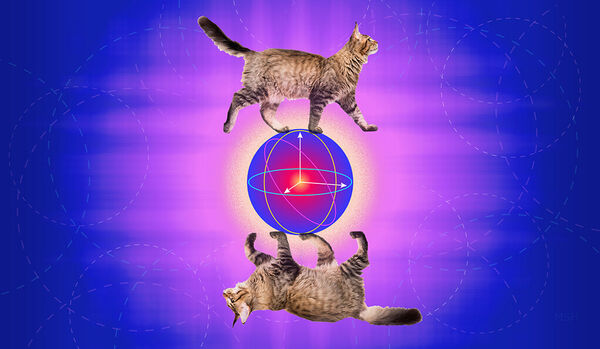
Yale quantum researchers create an error-correcting cat
"Yale physicists have developed an error-correcting cat — a new device that combines the Schrödinger’s cat concept of superposition (a physical system existing in two states at once) with the ability to fix some of the trickiest errors in a quantum computation. It is Yale’s latest breakthrough in the effort to master and manipulate the physics necessary for a useful quantum computer: correcting the stream of errors that crop up among fragile bits of quantum information, called qubits, while performing a task. A new study reporting on the discovery appears in the journal Nature. The senior author is Michel Devoret, Yale’s F.W. Beinecke Professor of Applied Physics and Physics. The study’s co-first authors are Alexander Grimm, a former postdoctoral associate in Devoret’s lab who is now a tenure-track scientist at the Paul Scherrer Institute in Switzerland, and Nicholas Frattini, a graduate student in Devoret’s lab." [...]
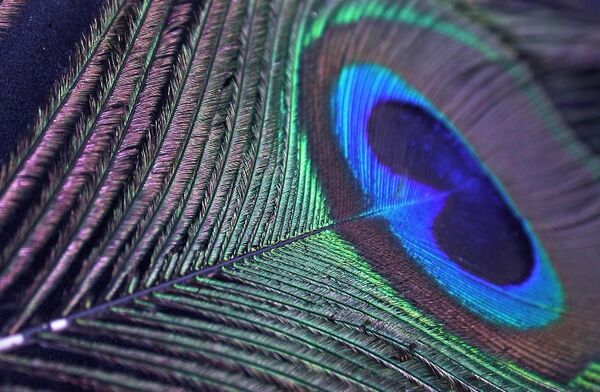
Engineers manipulate color on the nanoscale, making it disappear
"Most of the time, a material’s color stems from its chemical properties. Different atoms and molecules absorb different wavelengths of light; the remaining wavelengths are the “intrinsic colors” that we perceive when they are reflected back to our eyes. So-called “structural color” works differently; it’s a property of physics, not chemistry. Microscopic patterns on some surfaces reflect light in such a way that different wavelengths collide and interfere with one another. For example, a peacock’s feathers are made of transparent protein fibers that have no intrinsic color themselves, yet we see shifting, iridescent blue, green, and purple hues because of the nanoscale structures on their surfaces. Penn engineers have now developed a system of nanoscale semiconductor strips that uses structural color interactions to eliminate the strips’ intrinsic color entirely." [...]
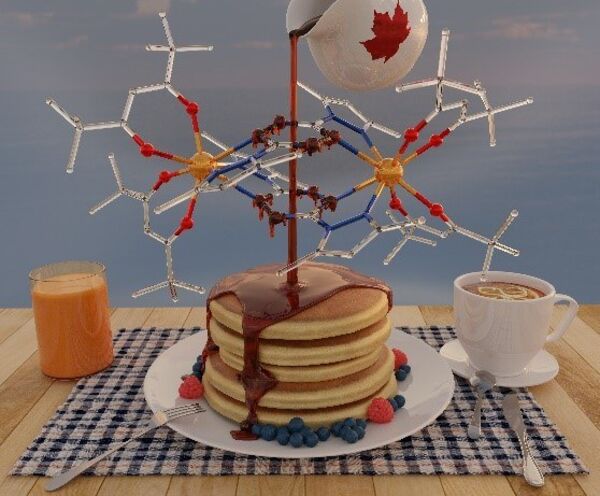
Pancake bonding as a new tool to construct novel metal based magnetic materials
"A Canadian-Finnish collaboration has led to the discovery of a novel magnetic compound in which two magnetic dysprosium metal ions are bridged by two aromatic organic radicals forming a pancake bond. The results of this study can be utilized to improve the magnetic properties of similar compounds. The theoretical investigation of the study was carried out by the Academy Research Fellow Jani O. Moilanen at the University of Jyväskylä, whereas the experimental work was performed at the University of Ottawa in the groups of Profs. Muralee Murugesu and Jaclyn L. Brusso. The research results were published in the well-recognized chemistry journal Inorganic Chemistry Frontiers in July 2020 – with the cover art. Magnets are used in many modern electronic devices ranging from mobile phones and computers to medical imaging devices." [...]

Layer of nanoparticles could improve LED performance and lifetime
"This is according to a team from Imperial College London and the Indian Institute of Technology (IIT) Guwahati who have found a new way to boost the amount of light LEDs produce. They report their innovation in the journal Light: Science & Applications. Making light-emitting diode (LED) light sources more efficient and longer-lasting will mean they use less energy, reducing the environmental impact of their electricity use. LEDs are used in a wide range of applications, from traffic lights and backlighting for electronic displays, smartphones, large outdoor screens, and general decorative lighting, to sensing, water purification, and decontamination of infected surfaces. The team modelled the impact of placing a two-dimensional (single layer) of nanoparticles between the LED chip, which produces the light, and the transparent casing that protects the chip. Although the casing is necessary, it can cause unwanted reflections of the light emitted from the LED chip, meaning not all the light escapes." [...]

Quantum goes deeper
"Experts in quantum cold-atom sensors are delving deep underground in a new project aimed at harnessing quantum gravity sensing technology in harsh underground borehole environments. The Gravity Delve project, funded by Innovate UK, brings together academics from the UK Quantum Technology Hub Sensors and Timing, which is led by the University of Birmingham and Nemein Ltd, with the aim of investigating the benefits and challenges associated with using quantum gravity sensors down boreholes. Quantum gravity sensors based on atom interferometry are already being developed for use in the oil and gas sector. Quantum cold-atom sensors designed to operate on the surface will be able to detect and monitor objects beneath the ground better than any current technology. However, little attention has been paid to-date to the benefits that borehole deployable quantum gravity sensors could have. Gravity Delve aims to address this." [...]
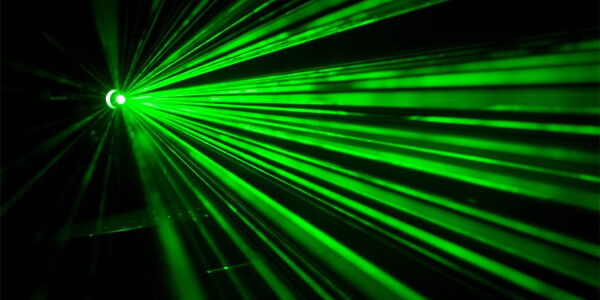
Materials Science Researchers Develop First Electrically Injected Laser
"Materials science researchers, led by electrical engineering professor Shui-Qing “Fisher” Yu, have demonstrated the first electrically injected laser made with germanium tin. Used as a semiconducting material for circuits on electronic devices, the diode laser could improve micro-processing speed and efficiency at much lower costs. In tests, the laser operated in pulsed conditions up to 100 kelvins, or 279 degrees below zero Fahrenheit. “Our results are a major advance for group-IV-based lasers,” Yu said. “They could serve as the promising route for laser integration on silicon and a major step toward significantly improving circuits for electronics devices.” The research is sponsored by the Air Force Office of Scientific Research, and the findings have been published in Optica, the journal of The Optical Society. Yiyin Zhou, a U of A doctoral student in the microelectronics-photonics program authored the article." [...]
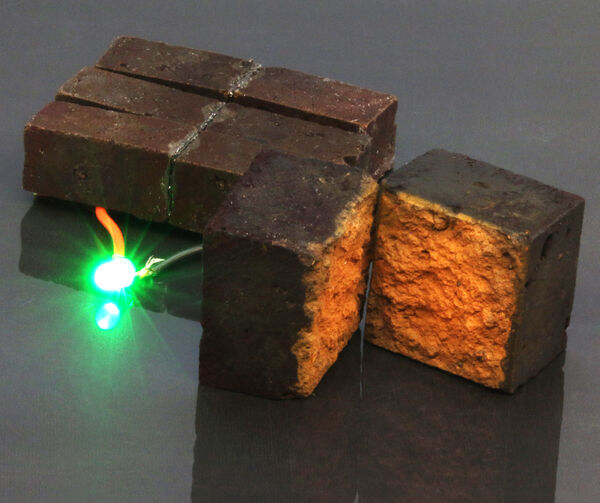
Storing energy in red bricks
"Imagine plugging in to your brick house. Red bricks — some of the world’s cheapest and most familiar building materials — can be converted into energy storage units that can be charged to hold electricity, like a battery, according to new research from Washington University in St. Louis. Brick has been used in walls and buildings for thousands of years, but rarely has been found fit for any other use. Now, chemists in Arts & Sciences have developed a method to make or modify “smart bricks” that can store energy until required for powering devices. A proof-of-concept published Aug. 11 in Nature Communications (and pictured below) shows a brick directly powering a green LED light. “Our method works with regular brick or recycled bricks, and we can make our own bricks as well,” said Julio D’Arcy, assistant professor of chemistry." [...]
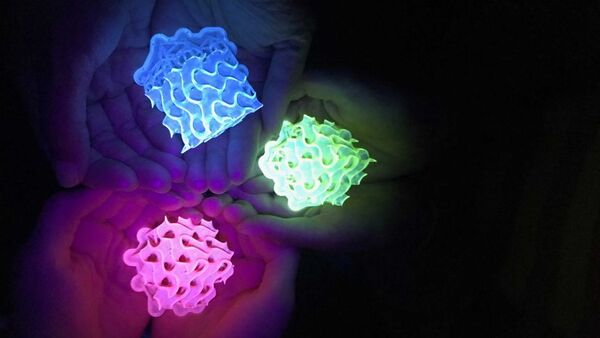
Scientists create brightest-known fluorescent materials in existence
"Fluoro highlighters, glow-in-the-dark paints or even high-viz witch's hats are bright, but they are nothing compared to these balls. Scientists in the US and Denmark have created the brightest-known fluorescent materials in existence, by figuring out a reliable way to make fluorescent solids. This discovery, published today in the journal Chem, could have potential applications in everything from solar energy to medical diagnostics and lasers, to perhaps even autonomous cars. While there are more than 100,000 fluorescent dyes that glow when they are in a liquid form, maintaining the brightness of the colours is much trickier in solids. This is due to a process called fluorescence quenching, said materials chemist Amar Flood of Indiana University, who is one of the senior authors on the study. Molecules of fluorescent dyes — or fluorophores — in liquids are separated by other chemicals called solvents, whereas in solid form they pack too close together and interfere with each other." [...]

Assessing the value of battery energy storage in future power grids
"Storage value increases as variable renewable energy supplies an increasing share of electricity, but storage cost declines are needed to realize full potential. In the transition to a decarbonized electric power system, variable renewable energy (VRE) resources such as wind and solar photovoltaics play a vital role due to their availability, scalability, and affordability. However, the degree to which VRE resources can be successfully deployed to decarbonize the electric power system hinges on the future availability and cost of energy storage technologies. In a paper recently published in Applied Energy, researchers from MIT and Princeton University examine battery storage to determine the key drivers that impact its economic value, how that value might change with increasing deployment over time, and the implications for the long-term cost-effectiveness of storage. “Battery storage helps make better use of electricity system assets, including wind and solar farms, natural gas power plants, and transmission lines, and that can defer or eliminate unnecessary investment in these capital-intensive assets,” says Dharik Mallapragada, the paper’s lead author. “Our paper demonstrates that this ‘capacity deferral,’ or substitution of batteries for generation or transmission capacity, is the primary source of storage value.” Other sources of storage value include providing operating reserves to electricity system operators, avoiding fuel cost and wear and tear incurred by cycling on and off gas-fired power plants, and shifting energy from low price periods to high value periods — but the paper showed that these sources are secondary in importance to value from avoiding capacity investments." [...]
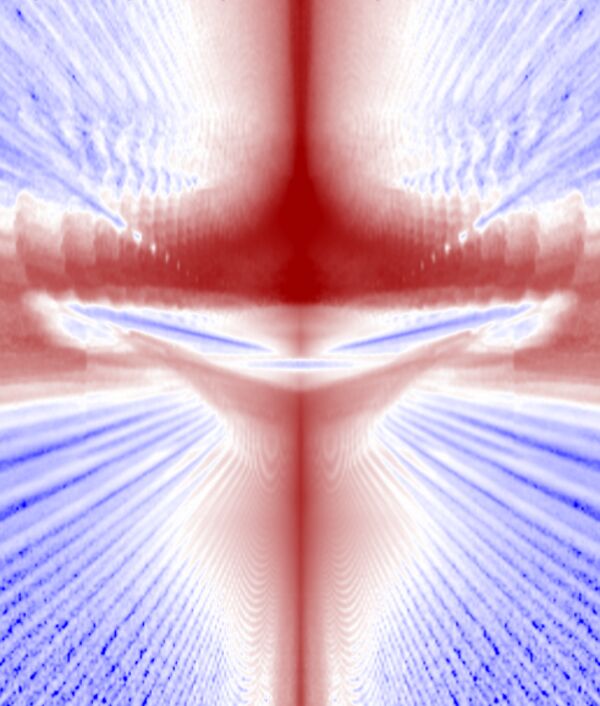
Manchester-led research offers advance in superconductors with a ‘twist’
"An international research team led by The University of Manchester has revealed a nanomaterial that mirrors the “magic angle” effect originally found in a complex man-made structure known as twisted bilayer graphene – a key area of study in physics in recent years. The new research shows that the special topology of rhombohedral graphite effectively provides an inbuilt “twist” and therefore offers an alternative medium to study potentially game-changing effects like superconductivity. “It is an interesting alternative to highly popular studies of magic-angle graphene” said graphene pioneer Professor Sir Andre Geim, a co-author of the study. The team, led by Artem Mishchenko, Professor of Condensed Matter Physics at The University of Manchester published its findings today in the journal Nature. “Rhombohedral graphite can help to better understand materials in which strong electronic correlations are important - such as heavy-fermion compounds and high-temperature superconductors”, said Professor Mishchenko. A previous step-forward in two-dimensional materials research was the curious behaviour that stacking one sheet of graphene atop one another and twisting it to a ‘magic angle’ changed the bilayer’s properties, turning it into a superconductor." [...]
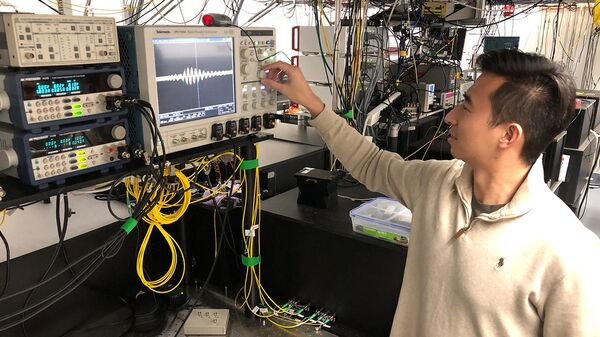
UChicago scientists discover way to make quantum states last 10,000 times longer
"Simple innovation expected to open multiple new avenues for quantum science If we can harness it, quantum technology promises fantastic new possibilities. But first, scientists need to coax quantum systems to stay yoked for longer than a few millionths of a second. A team of scientists at the University of Chicago’s Pritzker School of Molecular Engineering announced the discovery of a simple modification that allows quantum systems to stay operational—or “coherent”—10,000 times longer than before. Though the scientists tested their technique on a particular class of quantum systems called solid-state qubits, they think it should be applicable to many other kinds of quantum systems and could thus revolutionize quantum communication, computing and sensing. The study was published Aug. 13 in Science. “This breakthrough lays the groundwork for exciting new avenues of research in quantum science,” said study lead author David Awschalom, the Liew Family Professor in Molecular Engineering, senior scientist at Argonne National Laboratory and director of the Chicago Quantum Exchange." [...]
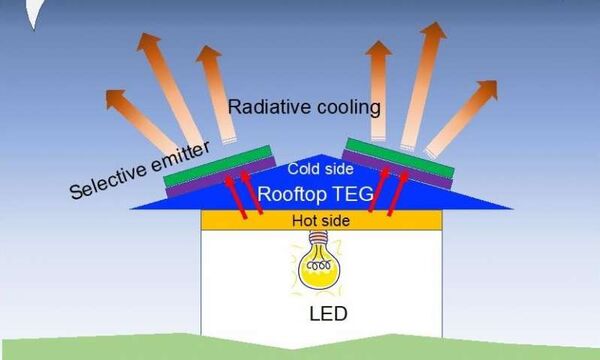
Researchers Design Efficient Low-Cost System for Producing Power at Night
"Rooftop radiative cooling system could provide lighting power when solar energy is unavailable Researchers have designed an off-grid, low-cost modular energy source that can efficiently produce power at night. The system uses commercially available technology and could eventually help meet the need for nighttime lighting in urban areas or provide lighting in developing countries. Although solar power brings many benefits, its use depends heavily on the distribution of sunlight, which can be limited in many locations and is completely unavailable at night. Systems that store energy produced during the day are typically expensive, thus driving up the cost of using solar power. To find a less-expensive alternative, researchers led by Shanhui Fan from Stanford University looked to radiative cooling. This approach uses the temperature difference resulting from heat absorbed from the surrounding air and the radiant cooling effect of cold space to generate electricity." [...]
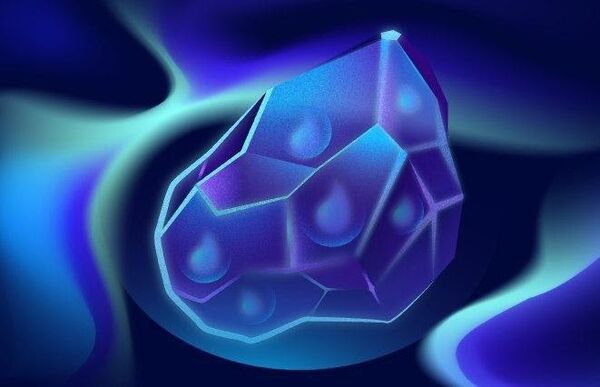
New phase of nanoconfined water discovered
"Researchers at MIPT Laboratory of Terahertz Spectroscopy together with their Russian and international colleagues discovered a new phase of nanoconfined water; separate water molecules that are confined within nanocavities formed by ions of cordierite crystal lattice. The first reliable experimental observation of a phase transition in a network of dipole-dipole coupled water molecules is, in and of itself, an important fundamental breakthrough. But apart from that, the discovered phenomenon can also find practical applications in ferroelectrics, artificial quantum systems, and biocompatible nanoelectronics. The study was a joint effort of MIPT scientists and researchers from Shubnikov Institute of Crystallography, A. M. Prokhorov General Physics Institute of RAS, Skoltech, Sobolev Institute of Geology and Mineralogy, and Novosibirsk State University, as well as their colleagues from Germany (Stuttgart University), the Czech Republic (Prague Institute of Physics), and Japan (University of Tokyo). The results of the study have been reported in Nature Communications. “We are searching for new phases of electric dipole lattice, i. e. an ensemble of interacting point electric dipoles,” explained Mikhail Belyanchikov, one of the study’s initiators and a junior researcher at MIPT Laboratory of Terahertz Spectroscopy." [...]
Modelos 3D
Com a disponibilidade de ferramentas que permitem dar azo a nossa imaginação na criação de peças 3D e espaços como o thingiverse para as publicar, esta rubrica apresenta alguns modelos selecionados que poderão ser úteis.
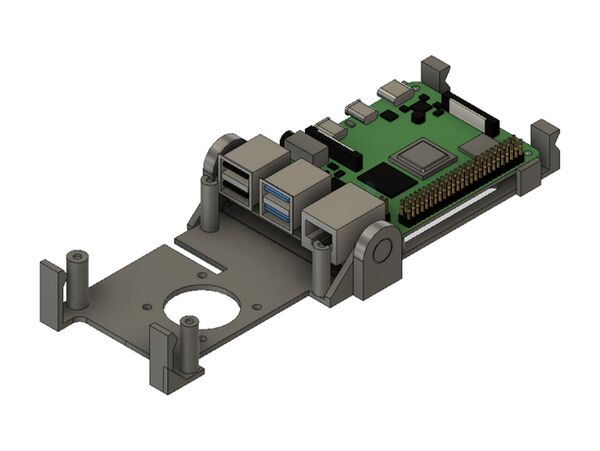
Fold-A-Pi - The Foldable Print-In-Place Pi 3/4 Case
"Week 4 of my Pi Twenty-Six ways is this case. It prints in place with a hinge that allows it to fold over your Pi and snap into place, holding it safe and secure! I've tested this on my Prusa MK3S, and have had a few tests done one some creality printers. Tolerances are tight, but should be manageable on many printers. " [...]
Documentação
A documentação é parte essencial do processo de aprendizagem e a Internet além de artigos interessantes de explorar também tem alguma documentação em formato PDF interessante de ler. Todos os links aqui apresentados são para conteúdo disponibilizado livremente pelo editor do livro.

newelectronics 11 Agosto 2020
"New Electronics is a fortnightly magazine focusing on technological innovation, news and the latest developments in the electronics sector. Downloadable as a digital page turner or pdf file, or offered as a hard copy, the New Electronics magazine is available in a format to suit you. " [...]
Projetos Maker
Diversos Projetos interessantes.
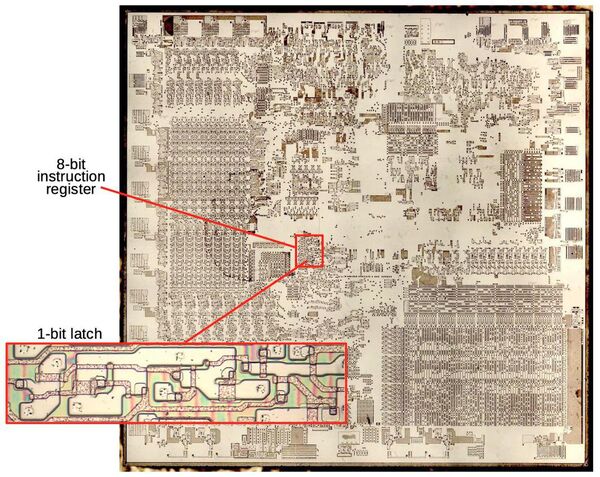
Latches inside: Reverse-engineering the Intel 8086's instruction register
"The Intel 8086 microprocessor is one of the most influential chips ever created; it led to the x86 architecture that dominates desktop and server computing today. But it is still simple enough that its circuitry can be studied under the microscope and understood. In this post, I explain the implementation of a dynamic latch, a circuit that holds a single bit. The 8086 has over 80 latches scattered throughout the chip, holding a variety of important processor state bits,1 but I'll focus on the eight latches that implement the instruction register and hold the instruction that is being executed. The photo above shows the silicon die of the 8086 processor under a microscope. I removed the metal and polysilicon layers to reveal the transistors, approximately 29,000 of them." [...]
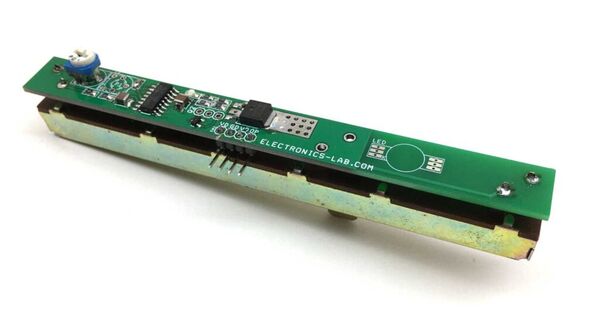
12W Dimmer with Soft Start for 12V LEDs
"The circuit presented here is a LED dimmer with a soft-start function. The board can drive a LED up to 12W and the circuit can manage a load up to 1A continuous with 12Vsupply. The circuit is built using SG3525 PWM IC and the IRFR120 MOSFET, SG3525 generates the PWM, and IRFR120 MOSFET drives the 12W max load. BC847 is used to invert the PWM signal from SG3525 and create a soft-start circuit. SG3525 has a soft-start function and the soft-start timing can be slowed down by increasing the capacitor C2 value to 22uF/16V. Trimmer pot PR1 provided to adjust the PWM frequency from 210 Hz to 6.5Khz." [...]
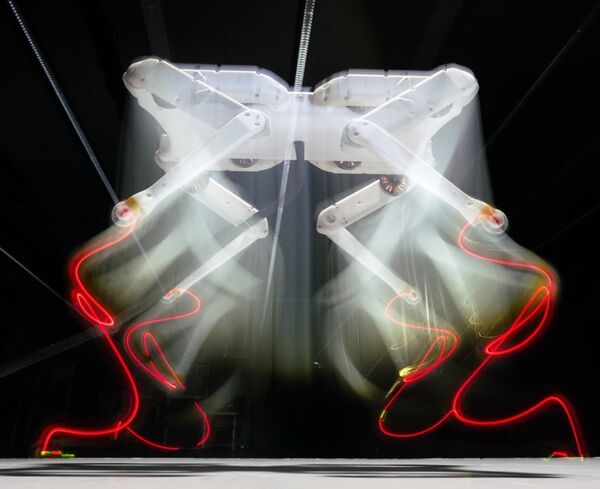
Open Dynamic Robot Initiative
"An Open Torque-Controlled Modular Robot Architecture for Legged Locomotion Research This website is the entry point to the ressources of the Open Dynamic Robot Initiative. This project originated in an effort to build a low cost and low complexity actuator module using brushless motors that can be used to build different types of torque controlled robots with mostly 3D printed and off-the-shelves components. This module, and extensions, can be used to build legged robots or manipulators. A paper describing the actuator module and the quadruped design can be found here. A paper describing the TriFinger Manipulator Platform and real-time reinforcement learning experiments can be found here. " [...]
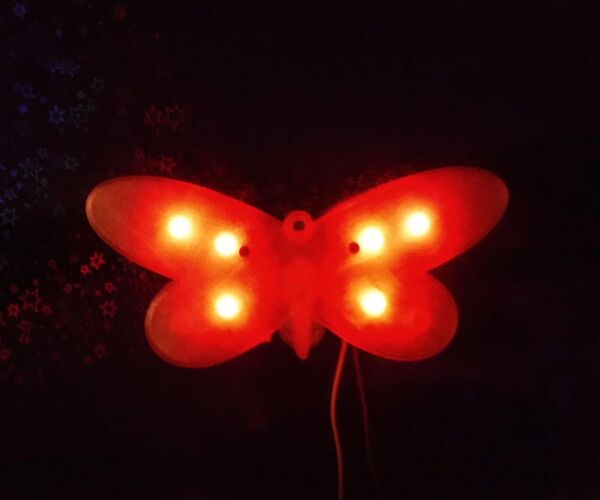
Twinkle_night_lights
"This project is an automatic light activated counter which comes to life after dark and switches LED’s in a binary sequence. As the LED’s are free wired, they can be placed in any order to highlight the item to which they are attached. The circuit has a PCB design which was created in EagleCAD and manufactured as OSHpark although the circuit could have been built on Veroboard with through hole components. The circuit will then be used to light a 3D printed object. " [...]
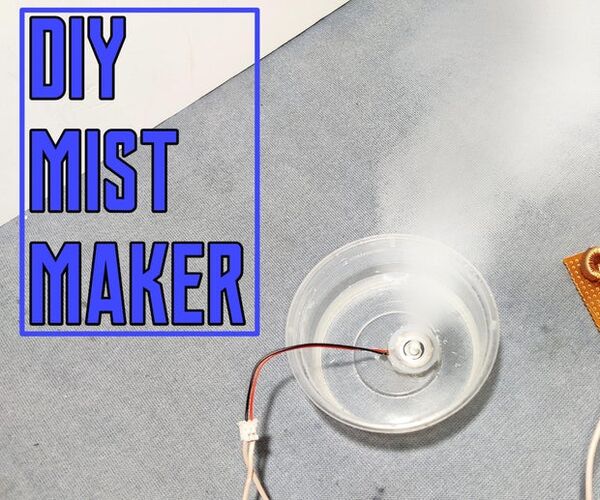
Diy Mist/Fog Maker Using Ic 555
"In this tutorial i am showing how to build a mist/fog maker using IC 555 very simple circuit. This is also know as humidifier,atomizer lets get started. " [...]
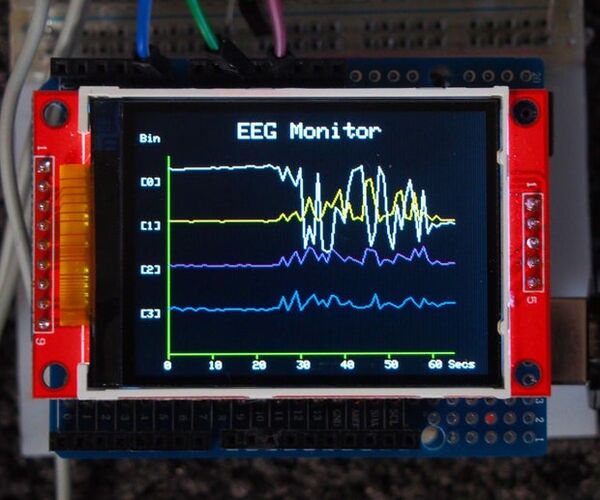
Mind Control 3: EEG Monitor
"An electroencephalogram (EEG) is a test used to evaluate electrical activity in the brain. This instructables explains how to build an EEG waveform monitor using an Arduino UNO R3, a TFT graphics shield, and a modified AD8232 heart monitor. The TFT graphics shield is described in my instructable https://www.instructables.com/id/Arduino-TFT-Grap... Due to its small size the TFT display can only show 4 out of the 32 possible channels at any one time ... but the choice of channels is yours. Processing software is included for displaying all 32 EEG channels simultaneously on your PC screen. Arduino EEG software covering each of the following frequency ranges is also presented [1]: DC .. 32Hz DC .. 64Hz DC .. 128Hz DC .. 256Hz DC .. 512Hz DC .. 1024Hz DC .. 2048Hz DC .. 3200Hz The estimated cost of parts for this project is less than $30. Photos The cover photo shows the EEG Monitor display Photo 2 shows the completed monitor The video shows the EEG Monitor in operation Notes [1] DC stands for Direct Current which equates to a frequency of 0Hz" [...]
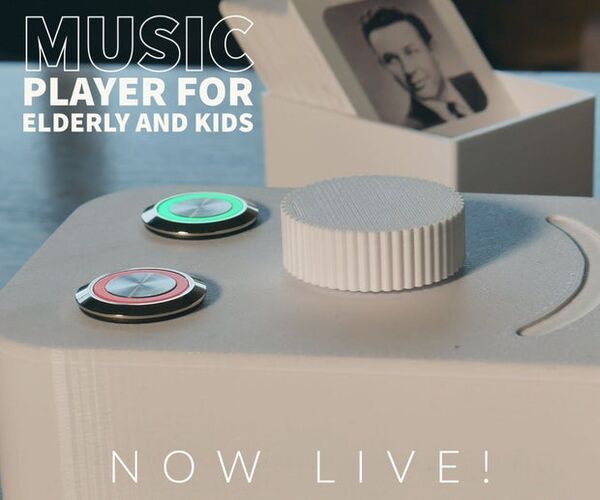
Juuke - a RFID Music Player for Elderly and Kids
"This is the Juuke box. The Juuke box is your own musical friend, made to be as easy as possible to use. It is especially designed to be used by elderly and kids, but can of course be used by all other ages. The reason we created this, is because of my girlfriend's grandmother. She told me that her and her grandma sitting in the kitchen, listening to music, dancing and laughing. Sadly, through the last years, her grandma has been in and out from hospital." [...]
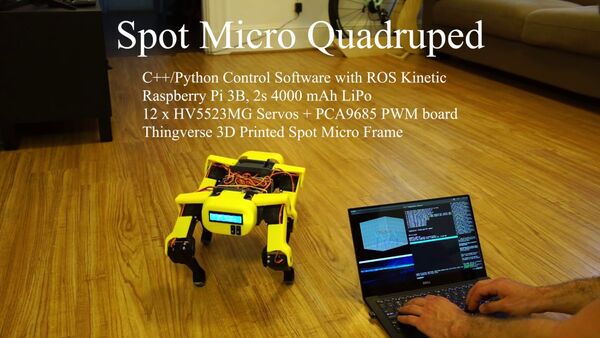
Spot Micro Quadruped Project
"This project is the source code for a Spot Micro quadruped, a 4 legged open source robot. This code is capable of keyboard control of a spot micro robot with sit, stand, angle command, and walk capability. The software is implemented on a Raspberry Pi 3B computer running Ubuntu 16.04. The software is composed ot C++ and python nodes in a ROS framework. " [...]
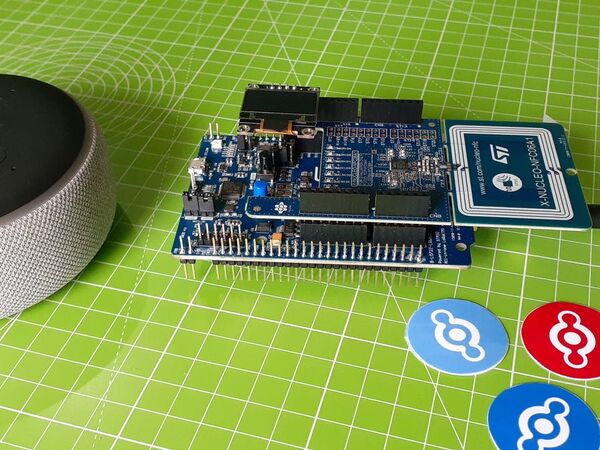
Helium Lora Mapper
"Maps the people traffic/crowd in common or remote places with Helium Network and AWS cloud. Introduction: Everyone knows well what is google map and how its useful in finding shops, locations or routes etc. In Cities had seen people who checks the google map before starting to office, the reason is "Traffic" its painful and I personalty experienced that so we watch out the traffic condition based on that adjust the time. Now the current situation is different, people forgot about traffic and started worried about the crowd. When we go out for shop or works we need to maintain distancing these days. If crowd is more people wont feel safely." [...]
RGB LED Matrix Using Neopixel
"In this tutorial, I am going to show you how to build a 5*5 RGB LEDMATRIX USING NEOPIXEL. With this matrix, we can display mesmerizing animations, emojis and letters supersimple very attractive. let's get started! " [...]

Alexa Home Automation System Using NodeMCU & Relay Module
"You can easily control light, fan, and other home appliances with the voice commands using the NodeMCU and Relay module. In this IoT project, I have made the Alexa Smart Home Automation system using the NodeMCU ESP8266 & Relay Module. You can easily control light, fan, and other home appliances with the voice command. To connect the Echo Dot smart speaker with the NodeMCU, I have used only the Amazon Alexa app. If you don't have Echo Dot smart speaker, still you can control the home appliances. And you can also monitor the relay time feedback of the switches from the smartphone." [...]
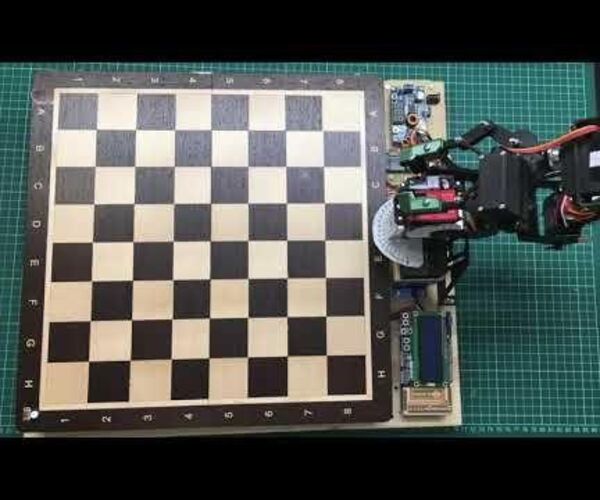
How to Built a Chess Robot With Arduino Mega
"The chess robot uses an algorithm of Micro-Max Chess Source found on the link below: http://home.hccnet.nl/h.g.muller/max-src2.html Supplies: 1 x Arduino Mega 1 x AZDelivery LCD1602 Display Keypad Shield HD44780 1602 1 x PCA9685 12bit PWM Servo Motor I2C Controller 1 x DC-DC 5A 75W step down converter 8 x 74HC165 Shift Registers 64 x Reed Sensors 64 x 10kOhm Resistors 1 x Mechanical Kit Robot arm 6-DOF 5 x 10 kg/cm torque 180deg Servo Motors 1 x 20 kg/cm torque 180deg Servo Motor 1 x Electronic plastic project box 1 x Power Jack Connector 1 x 12V Power Source at least 5000mAh 4 x 150x150mm PCB Board with single sided copper 4 x 100x70mm PCB Board with double sided copper 1 x Chess board 320x320mm (40mm box size) and chess pieces with magnet Wood for the base" [...]
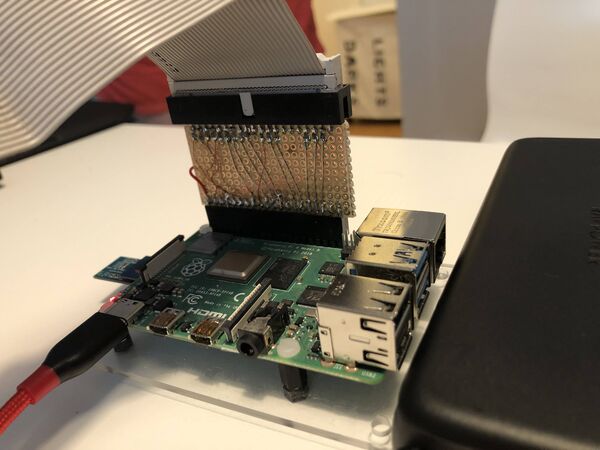
pata-gpio
"pata-gpio is a Linux kernel driver for GPIO bitbanged PATA (also known as ATA/ATAPI or IDE). Pin configuration can be set via device tree, the regular ATA framework is used. IDE Primary/Secondary device support is implemented. Performance On a Raspberry Pi 4 (with direct GPIO) about 800 KiB/s reading, 500 KiB/s writing speed is possible. Most of the performance bottleneck is down to the usage of libgpiod (kernel gpio abstraction), which is optimized for tasks like switching LEDs. Data transmission is well outside the design scope of libgpiod." [...]
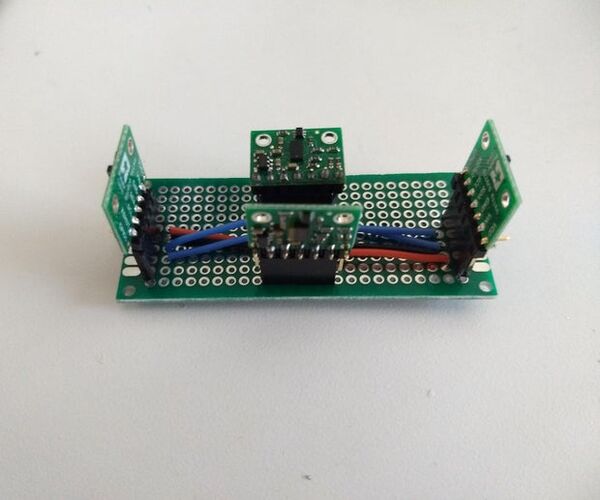
VL53L0X Sensor System
"Circuit design for using multiple VL53L0X breakout boards. In this design, we have a sensor facing forward, left, right, and up. The application of this board was towards obstacle avoidance for WiFi drones. Supplies: - VL53L0X Sensor x4 - Right angle headers (5 pins) x4 - Dupont header connectors (5 pins) x4 - Hook-up wire - PCB (30mm x 70mm) - Solder + Soldering Iron - Wire Stripper and Cutter - Handful of resistors" [...]
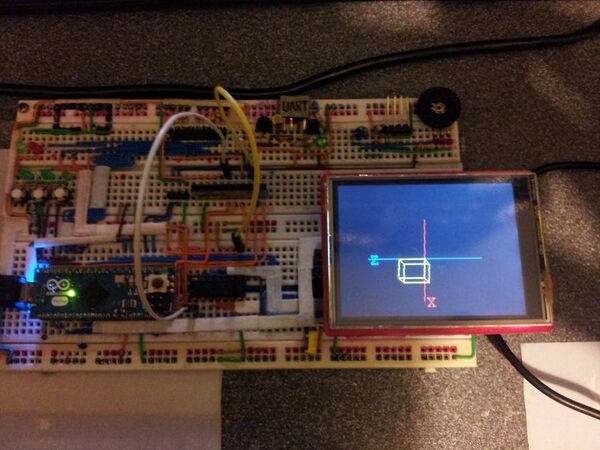
Arduino 3D Axonometric Projection
"3D axonometric projection on 8-bit and 32-bit microcontroller and TFT. 3D PROJECTION 3D projection is any method of mapping three-dimensional points to a two-dimensional plane. As most current methods for displaying graphical data are based on planar two-dimensional media, the use of this type of projection is widespread, especially in computer graphics and engineering. 3D axonometric projection on Arduino Micro 8-bit and TFT touch shield change of projection is made using the touch screen. AXONOMETRIC PROJECTION Axonometric projection is a type of parallel projection used for creating a pictorial drawing of an object, where the object is rotated along one or more of its axes relative to the plane of projection. There are three main types of axonometric projection: isometric, dimetric, and trimetric projection." [...]
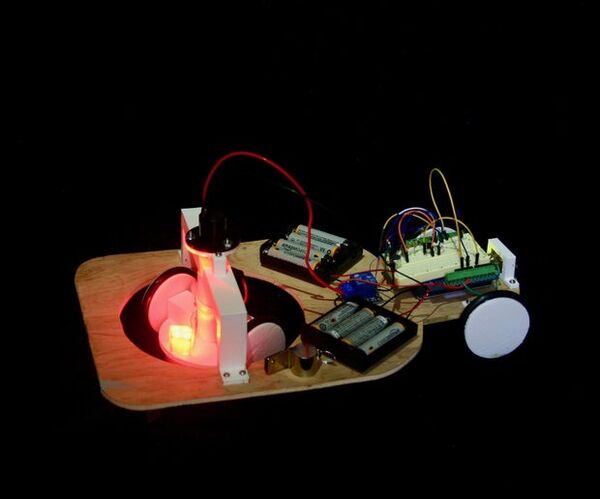
Whistle Controlled Robot
"This robot is completely guided everywhere by whistle, much like the "Golden Sonic Toy" made in 1957. When switched on, the robot moves in the direction indicated by the illuminated arrow on the front drive wheel mechanism. When the whistle is blown, the front wheels rotate. Stop blowing the whistle and the machine will resume moving in the direction indicated by the arrow. The drive motor in forward mode moves the robot, in reverse mode it rotates the drive wheel assembly. To make all this operate, two "one way bearings," a slip ring, sound detector and SPDT relay are required." [...]
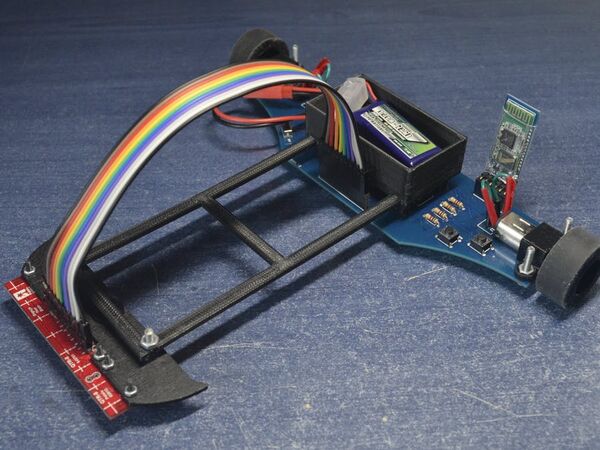
Line Follower Robot
"An autonomous high speed line follower robot based on PID control. I wanted to make a line follower robot for a competition for amateurs students, but I struggled to find a tutorial that explains exactly the line following process or that explains the principles by which it works. After 4 - 5 months of research, I managed to make an acceptable model that can take curves at a relatively high speed without getting off the track. At the end, it costed me 130 euro (pcb, 3d printing and all the components). 1. Making the line follower model - hardware First of all, I made this robot for a line tracker competition, so speed and control are the most important factors, but there are also some requirements ( for instance, the robot mustn't have the dimensions higher than 30x30 cm or the curve radius of the track must be at least 7.5 cm)." [...]
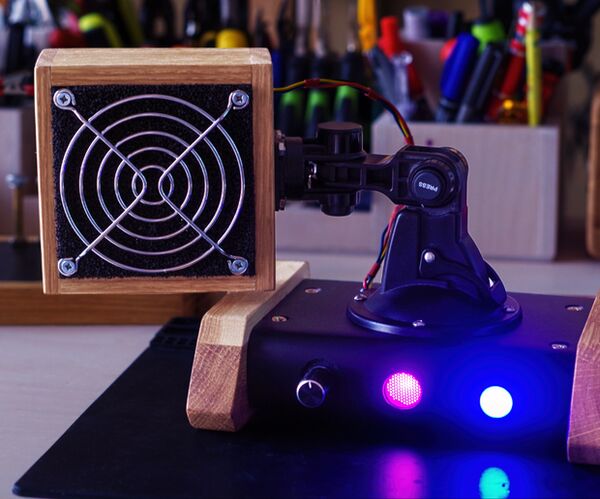
Powerful Fume Extractor on Articulating Arm
"I've had couple of soldering fume extractors before. First one didnt have enough power, and second one was just a fixed box without any articulating options, in many cases i could not find good position for it, it was too low or far behind. " [...]
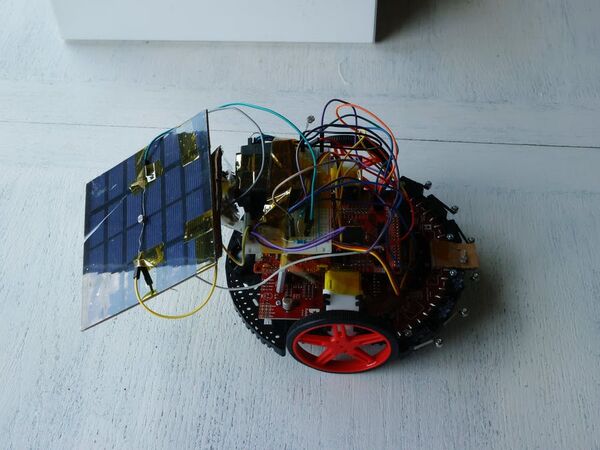
Small Solar Follower Version 1.0
"Using the TI-RSLK Max, I created a solar follower that avoids shade and follows the sun throughout the day. This small solar follower is the start of multiple iterations of a design I hope to implement before my college career is over. As I initially started this project under the TI University Summer Program, I aimed to keep the scope of it small, and doable within 1 month. The first thing I wanted my solar follower to do was to initially cycle through every reasonable angle, and find the brightest possible angle to start tracking the sun at. This ensures that whenever the robot is booted up, it can start harvesting energy at its maximum capabilities. This was achieved by reading the value of a resistor attached to the solar panel, as the servo rotates." [...]
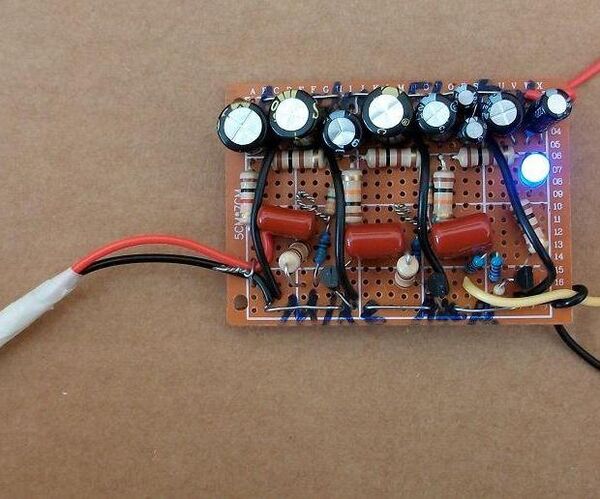
Transistor Microphone Amplifier
"This article shows you how to make a transistor microphone amplifier. The minimum power supply for this circuit is 1.5 V. However, you will need at least 3 V if you are making an optional LED detector (transistor Q3) and want your LED to turn ON. The signal from the microphone is amplified by transistor Q1 and Q2 before applied to Q3 transistor for detection. You can see my circuit working in the video. I thought of this idea after reading this article:https://www.instructables.com/id/Ultrasonic-Alien/ Supplies:Components: cheap microphone - 2, general-purpose transistors - 5, 100 ohm high power resistor - 5, 1 kohm resistor - 1, 10 kohm resistor - 10, 470 uF capacitor - 10, 220 kohm resistor - 2, 470 nF capacitor - 5, matrix board, insulated wires, 1 mm metal wire, 1.5 V or 3 V power source (AAA/AA/C/D batteries), 1 Megohm to 10 Megohm resistor pack. Tools: pliers, wire stripper Optional components: solder, LEDs - 2, battery harness." [...]
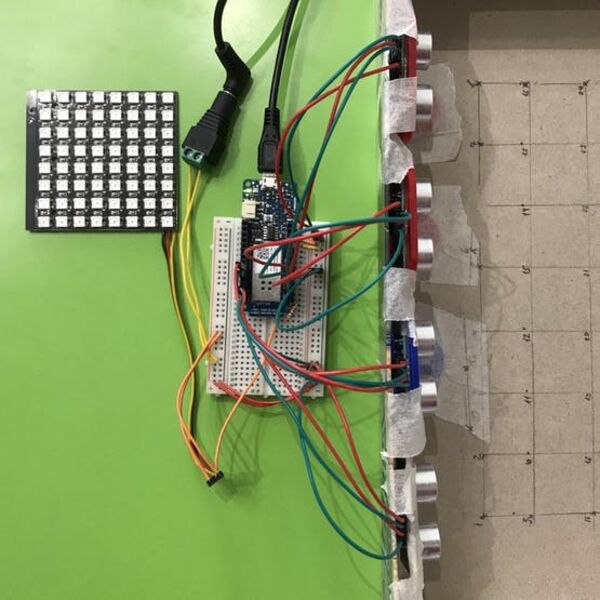
LED architectural machin
"Architectural machine for controlling a diode matrix ws2812b with 4 connected ultrasonic sensors and distance data collection in Excel. Introduction My aim was to create a project that can be applied in an architectural way. It was supposed to be playful and collect some data, but at the same time be simple to create, as this is my first experience with an Arduino. The essence of the project is to make an interactive consumer-driven light show. Using 4 (or more) rangefinders to drive the diode matrix along the (X; Y) axis and collect information in Excel. First prototype to understand how sensors work in connection with diodes This is my first Arduino experience." [...]
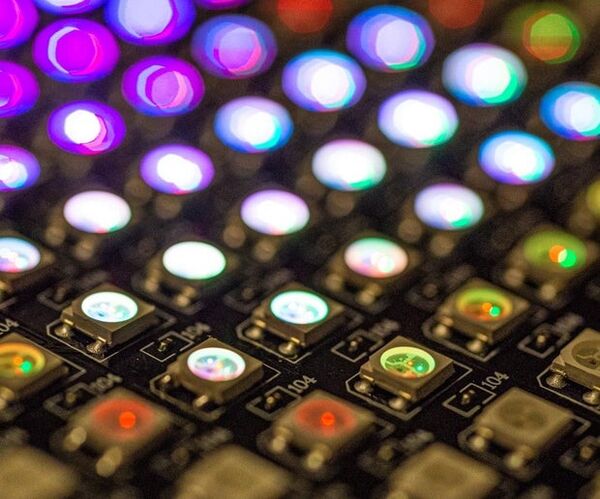
Promiscuous Leds
"Ever wonder about all the WiFi around you ? This simple display will graphically show you the surrounding WiFi users. This device continuously scans the local area WiFi channels in promiscuous mode, looks at the headers & tosses the payloads( a bit like reading the envelope but not opening it). We can then grab a list of who is sending & display some information. Since we don't want to creep people out too much we only display the lower three bytes of the senders MAC (which is a six byte number) the top bytes are used for manufacture information so the lower 3 tend to be random enough to get a pretty colors(the program further reduces this to 5-6-5 color code) . There are 13channels in N.A." [...]
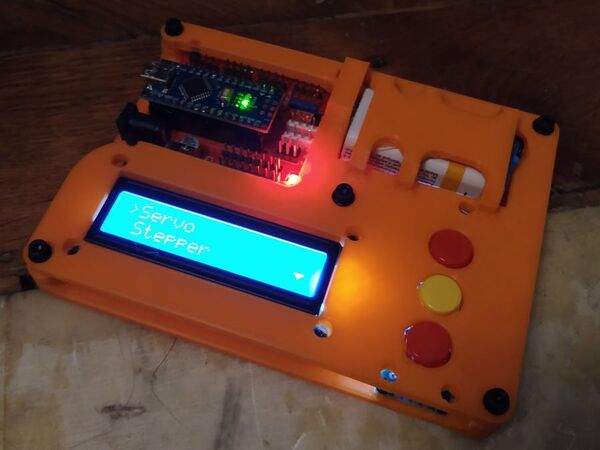
AVRaft - Makers Tool for Testing Actuators
"A small little console that allows you to quickly set, test, try many different actuators (e.g. servos, stepper, ultrasonic, DHT22, etc... ) AVRaft - a makers tool/toy I was fustrated to always needing to grab my ardunio, breadboard and jumper wires just to test a small servo, especially since I needed to connect all this mess to a computer. At the end of the day, it was a lot of work for not much and since I don't have a dedicated workshop, I could not afford leaving everything out. The idea thus came, "Maybe I could use one of my arduino nanos to make a small console with everything already set up". I wanted to make use of a LCD screen, but in order to keep as many pins available I had to use the I2C module that comes attach to many LCD screens. I had put together the bare minimum in terms of electronics to get the idea." [...]
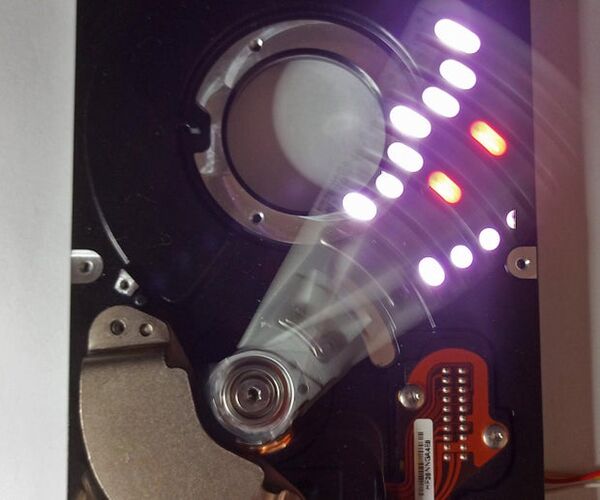
PendoLux
"I have always been fascinated by the precision mechanics present in mechanical hard drives and every time I have a broken one I try to find a use for it. This, together with the fact that I think it's a shame to throw away such a precious piece of technology, made me think of this project. The main idea of the project is to use the mechanics related to the movement of the magnetic head of an old hard disk to create a display showing the current time (it can be easily changed to display whatever you want). By replacing the Hard disk magnetic head with a bar of leds and by turning on the leds at the right time it is possible, using the persistence of the human eye, to form an image. For the led bar I used one equipped with the well known LED WS2812B that gives the possibility to control the leds with only one pin (besides the power supply of course). It should be noted that the flickering that you see in the video is not real." [...]
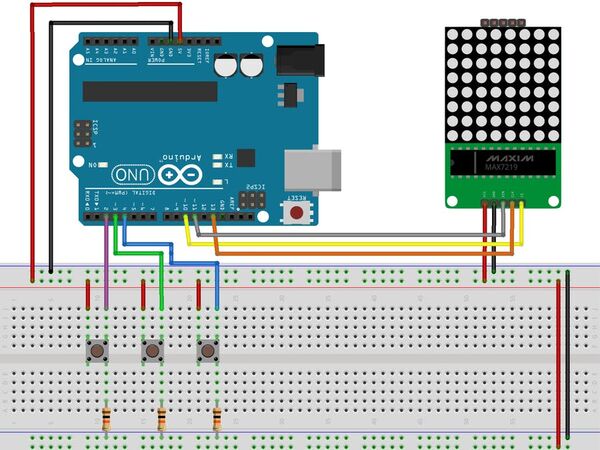
Treasure hunt Game with Arduino
"You will learn how to build your treasure hunt game with Arduino. Do you know how to create the treasure hunt game? This game is very fun and I will teach you how to create this game with Arduino. Are we going on a treasure hunt with the Arduino? For this project, we will have a 64 position square map. This map will be represented by an 8x8 LED matrix." [...]

LED Cube Light
"I've been wanting to make a simple LED Light box for some time now so decided to build one. I had some filament LED's left over from another build which worked perfectly to illuminate the diffused acrylic. You usually find filament LED's inside light bulbs which are in the style of Edison light globes. However, you can also buy them individually for pretty cheap. They throw off a lot of light and when you use some diffusing acrylic, you get a beautiful, soft light. Instead of using a toggle switch to turn the LED's on and off, I used a mercury switch." [...]
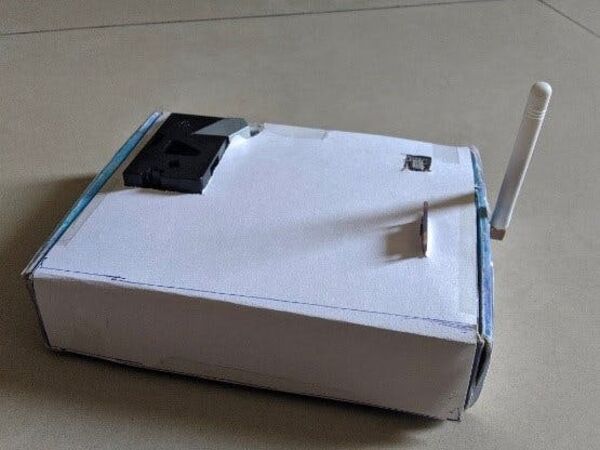
LoRa Powered Air Quality Monitoring System
"The project tackles one of the most serious issues of the 21st century, the degrading quality of air around us. We use LoRa to address this. In the recent years, air pollution has been a growing concern for the harmful effects it has on our environment. The problem is prevailing particularly in urban cities because of the increased traffic and a wide array of industries which produce a lot of harmful gases as a bi-product of manufacturing. Apart from this, indoor air pollution is also a great concern in metro cities. According to research, the air inside our house is even more polluted compared to the air in outdoor environments." [...]
How to Build PHIL - a Light Tracking Robot
"In this Instructable I will be showing you how I made this dual aixs light tracking robot using an Arduino Uno. All the CAD and code will be included so you can build it yourself without needing any programming or designing skills. All you will need is a 3D printer, an Arduino Uno and a few other basic parts! Supplies: Tools you will need: > A PC (duh) > A 3D printer > Soldering iron (and solder wire) > Screw driver Materials: > 3D printing filament (PLA recommended) > Proto board > Self-adhering rubber or foam strip (optional) > Some thin solid core wire > Heat shrink tubing Off-the-shelf components: > Arduino Uno (Or compatible board) > 2 x 100 F capacitors rated for 5V > 2 Micro servo motors > 4 Light dependant resistors (LDR's) > 1 x 5mm LED > 1 x 220 Ohm resistor > 4 x 10 kOhm resistors > 11 x M3 self tapping screws > 8 x M2 self tapping screws > 4 x M3 machine screws with nuts" [...]
Lorawan Vehicle Tracker
"This device will report a vehicle location using lorawan connectivity. During this Covid-19 pandemics, many countries face a crisis in their economics area. Many of them falling into great recession that forces them to create a bond in order to stimulate the economics sector. The side effect of this recession is huge amount of layoffs. Due to sudden unemployment, many of them are not ready and take a shortcut to be a thief. This project will solve a problem in this particular case by finding the lost vehicle using lorawan and GPS." [...]
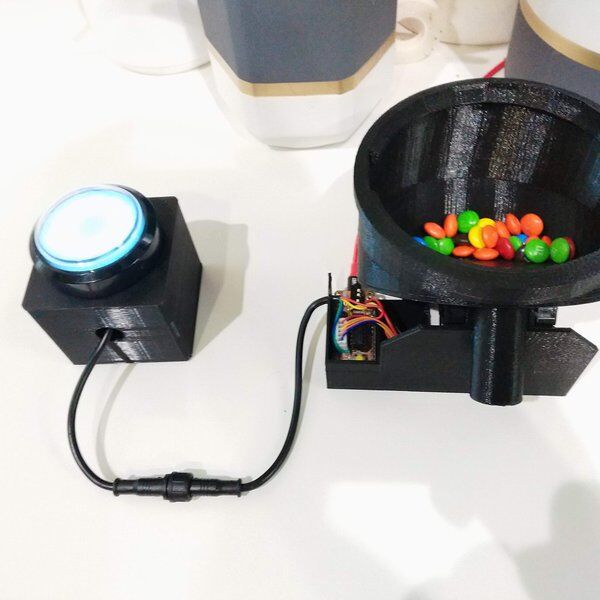
M&M Dispenser (for research use only!)
"Push a button, get a treat! This is an M&M dispenser that was made for a research study to test human motivation and attention for food rewards. It uses the Adafruit Feather M4 express for control, and a ULN2003 Feather board to control the dispensing motor. Also includes a beam-bream to detect when the M&M is dropped, as well as a TRRS jack to enable computer control via the GPIOs. " [...]
That's all Folks!



